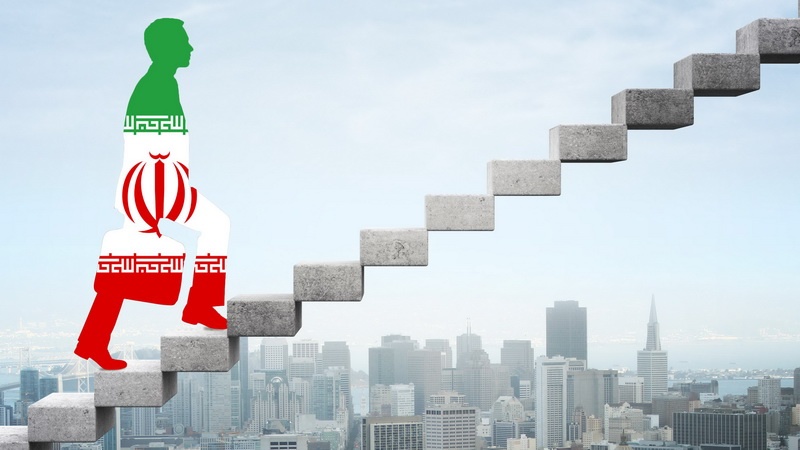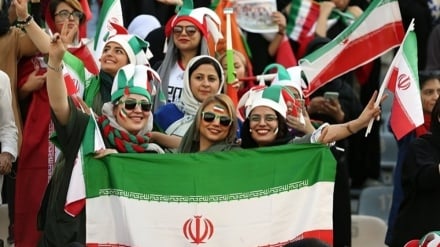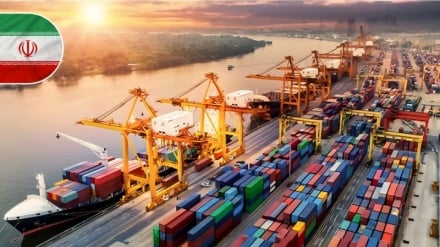Resistance Economy (2)
The study of the strategies adopted by countries for economic development shows that reinforcement of economy and national production are necessities that some developing countries have enforced, which have in turn brought about positive results.
For instance, Brazil and India, two newly-emerging powerful economies, as of the 1970s, have planned to replace imports in order to boost national production and allay their economic vulnerability in the face of foreign shocks. Based on this policy, countries which maintain huge domestic markets for a number of commodities make the related products instead of importing them in a bid to bolster their economies via reinforcement of national production, and a high rate of employment.
Although such policies have also been coupled with some negative impacts, such as accumulation of debts, exceeding $100bn for Brazil, this country has managed to optimize its macro-economic benchmarks, and cement its domestic industries, turning into one of the emerging powerful economies in the contemporary world. India has also managed to introduce itself as one of the emerging powerful economies of the world via adoption of similar policies, reinforcement of its national industries, and utilization of its massive domestic market.
Following Mao’s 1949 revolution, China initially aimed to expand its economy, in addition to reinforcement of its small domestic industries. China staged its cultural revolution in the year 1966 to boost its production capacity and its political might. Ultimately, upon the instatement of Deng Xiaoping, new developments took shape in China, leading to a significant economic growth in that country. In the year 2000, China joined the World Trade Organization, thereby expediting China’s economic growth, coupled with further economic reforms.
After the termination of World War II; Japan and France strictly limited their imports as a means to revive their industries and economies. This policy, in addition to plans to backup domestic production, turned these two countries into two main players in the global scene of economy within a few years. Certainly, after this phase in time, the two countries lowered their tariffs and opened their doors to free and competitive economies, while ending their bans on imports. Thus, other countries also pursued goals such as reinforcement of their economies against foreign shocks, and bolster of their national productions.
These strides leave long-term impacts, toughening up the economy under difficult conditions and reinforcing the economy’s tolerance in the face of pressures such as imposition of sanctions and/or sudden economic and financial shocks. A brief study of the history of economic sanctions in the global arena shows that as of termination of World War I, up to the year 1990, hundred and fifteen economic sanctions have been approved and implemented against different countries. Meanwhile, 77 cases of these 115 global economic sanctions, tantamount to 67% of these embargoes, have been imposed by the US administration. Since 1990, upon the collapse of the former Soviet Union and termination of the Cold War, the usage of the leverage of economic sanctions by the US has significantly grown such that from 1990-1999, the US share in imposition of global sanctions skyrocketed to 92%. Only in the first presidential term of Bill Clinton, the US imposed 61 economic sanctions against 35 countries, whose overall population stood at 2.3 billion in numbers, comprising 42% of the global population. Under these conditions, significant importance is attached to economic security.
Economic security is tied to several factors. For instance, it calls for maximum usage of domestic goods, and support for domestic investments. In fact, the main goal of Resistance Economy is to accomplish an active and dynamic economy, which dispels any hurdle on the way of community’s progress.
Thus, Resistance Economy is different from what is referred to as economic austerity. This is because in Resistance Economy, there is no restriction on sources. However, the optimal usage of existing sources should take place within the framework of a timetable. Meanwhile, there is a shortage of sources and capital in economic austerity, which compels the related states to ration sources and lower the consumption rate in order to face up to existing restrictions.
Generally speaking, the countries which do not maintain appropriate economies are extensively vulnerable to trans-regional powerful economies. This situation causes public discontent, unemployment, inflation, and recession, thereby posing a threat. In the view of theoreticians of economy, one of the decisive ways to boost economic security is to cement economic convergence.
Inclination toward regional cooperation has long been prevalent worldwide. However, the trend of global developments after World War II boosted this tendency. This cooperation emerged in all political, economic, security, and social realms, or a combination of all of these domains in different forms and shapes. Although the developments that transpired after the termination of World War II, display the political influence of the East and West in conclusion of major regional treaties and cooperation; such as the establishment of the North Atlantic Treaty Organization (NATO), however amid incidents such as the collapse of former Soviet Union; the political interests gradually faded away within regional organizations and were replaced with economic developments.
Economists opine that approaches such as regional economic convergence can significantly allay the consequences of monetary crises and economic recession; a prime example of which is the incidents in East Asian countries in the year 1997. Therefore, in different economic realms such as South America, inclination toward economic cooperation has been cemented and reinforced. Economic cooperation is the most important type of regional cooperation which assists the reinforcement of economic structures of countries, because the world countries do not have access to all means of production and face limitations to this end. On the other hand, economic cooperation brings about welfare, wealth, and power and helps governments to achieve their political and security goals, which are also part of the vital national goals and interests of countries. Economic convergence irrefutably contributes to establishment of regional security and can lead to an appropriate state of welfare and security in the region upon severance of dependence on trans-regional powers.
Another important point is to focus on terms such as stability and resilience which are interrelated to Resistance Economy.
The term resilience shows to what extent countries show flexibility and how they enhance their tolerance against threats, and minimize their potential losses.
The term resilience has been used in the field of economy more than ever, especially in the aftermath of financial slump in the year 2008, such that the World Economic Forum has published an especial report, under the heading of national resilience in the face of global threats.
Generally speaking, economic threats leave impacts similar to impacts left by military threats. Upon the further complexity of economic vulnerabilities of, and surging rate of vulnerability of countries, economic threats target their national securities. Thus, economic security is tied to reinforcement of economy in the face of sudden shocks.
MR/MG



